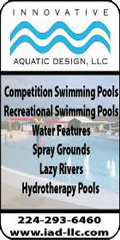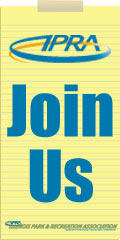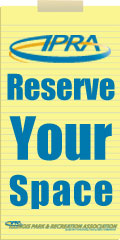
| IPRA Today - August 5, 2010 | Editorial link | www.ilipra.org |
Justice Issues New ADA Regs, Asks For Feedback!
In a related and surprising step, DOJ also released an Advance Notice of Proposed Rulemaking (ANPRM) regarding exercise equipment and accessible golf cars. These issues have been in discussion for decades and their release in an ANPRM is significant. The Old Regulation The "old" regulation, published July 26, 1991, is now amended. IPRA members know the old requirements as the Title II regulation. Included here are key points of the new regulation for states, counties, cities, park districts, school districts, townships and other forms of local government. It also talks briefly about the ANPRM. When are the new regulations effective? As we saw in 1991, the DOJ believes states and local governments need time to digest the new regulations. Therefore, they become effective six months after publication in the Federal Register, or sometime in very late January or early February of 2011. Design and construction requirements become effective one year later, in January or February of 2012. What new requirements are in the regulation? There are several new requirements, many of which have been in the works since 1993. The new requirements address design and construction in the 2010 Standard, as well as policy. From a design and construction perspective, some of the anticipated recreation design requirements are now final and enforceable. These include requirements for boating and fishing areas, playgrounds, fitness centers, golf courses, swimming pools, shooting ranges, bowling alleys and miniature golf. For more information about these requirements, see articles at www.rac-llc.com starting in late August 2010. The grafting of the recreation requirements onto the 1991 requirements (known as ADAAG) is accomplished by amending section 35.151 of the Title II regulation. In response to comments, DOJ acknowledged that a six-month period to learn the 2010 Standard is too short. It therefore allows 18 months from the date the new regulation is published in the Federal Register. That means new construction must adhere to the new 2010 Standard as of late January 2012. Regarding typical building elements, the U.S. Access Board has reformatted old ADAAG and made it into a more user-friendly and technologically current standard. This 2010 Standard must be followed in regards to design and construction. From a policy perspective, there are several new requirements. These include a requirement for power-driven mobility devices, such as Segways. States and local governments cannot flatly prohibit their use and are required to adopt policies regarding limitations on their use. Other requirements relate to service animals and clarify the restrictions a Title II entity can place on same, and also permit the barring of certain aggressive species as service animals. Another new area is extensive discussion about ticketing of accessible seats in performance venues operated by states and local governments. These address basic sales, transfers, release of tickets and more. Finally, some clarification is available regarding the treatment of existing recreation facilities under the old "program access" test. Are any of the old requirements eliminated? Yes ... sort of. DOJ made a point of reaffirming its satisfaction with some of the old requirements, including the program access test. But some change did occur. For example, in the 1991 Title II regulation every administrative complaint filed with a designated federal agency (Interior, Education, etc) was required to be investigated. DOJ now reports that due to the volume of complaints, investigating every complaint would have a "deleterious" impact on enforcement. The new enforcement provisions at 35.172 give designated federal agencies such as the Department of Interior some discretion in deciding which complaints against a park district it will investigate. DOJ reaffirmed its intention to be aggressive about enforcement. And remember that this is a Department of Justice Civil Rights Division that saw an 18-percent budget increase this year and added 102 new employees. Are we done? The answer here is a resounding NO! Design requirements for campsites, picnic areas, trails, trailheads, beaches and viewing areas remain to be completed by the Access Board and adopted by the Department of Justice. There is talk of a separate requirement for multi-user trails as well. And to the ANPRM mentioned earlier, accessible exercise equipment and accessible golf cars are very old issues that were never addressed. To see the entire ANPRM, go to www.ada.gov/anprm2010/equipment_anprm_2010.htm. The comment period here is 180 days (around the end of January 2011) and the interesting aspect is that the ANPRM questions address equipment and movable pieces, not just the built environment. In this writer’s opinion, this is consistent with the original intent of the ADA. IPRA members should have definite opinions about how to answer questions 12 and 13 regarding exercise equipment, and 14 and 15 regarding accessible golf cars. Bear in mind the typical idea-to-NPRM-to-public comment-to-final regulation timeframe is 5-10 years. If your agency has beaches, trails, campsites, picnic areas and golf, prepare to comment. And if your agency has fitness facilities or golf courses, start preparing comments now. This might make an excellent joint assignment for the Facility Management Section, Recreation Section, Therapeutic Recreation Section and Parks and Natural Resource Management Section. May I have some politics please? The release of the final regs responds to a 2008 Notice of Proposed Rulemaking (NPRM), which followed a 2004 Advance Notice of Proposed Rulemaking (ANPRM). In the opinion of this writer, there should be no surprises here. The DOJ release adopts with virtually no exceptions the earlier work of the Access Board (playgrounds in 2000, other recreation facilities in 2002 and a revised and reformatted ADAAG in 2004). In 2008, a more conservative presidential administration issued the NPRM. It posed some questions that made it appear a watering-down of ADA requirements was the likely outcome. However, with change in the White House, the proposed final regulation drafted after the 2008 NPRM was withdrawn days after the new president was inaugurated. Draw your own conclusions. What is clear is that in 2008 a more conservative path was set, only to be changed months later after a new president was elected. Details, I want details! With the National Recreation and Parks Association, our firm will conduct webinars on Sept. 2, 16 and 30. To attend these webinars, visit www.nrpa.org. To arrange your own training, in person or via webinar, contact Beth Ham at beth.alexander@wtengineering.com or at 224/293-6362. How can we track this? Go to www.ada.gov and click on the link at the center of the screen to receive updates. You’ll be e-mailed when there are new proposed regulations, new settlement agreements, new technical assistance papers and more. How can we implement this? Assign someone on staff to follow, interpret and navigate through these changes. Or reach an expert in the field. Find someone with experience on an access board committee or someone who has trained DOJ enforcement staff or worked closely with other entities that enforce access and inclusion requirements or has service delivery experience. Conclusion Since 1993, public entities have known these guidelines would become regulations. That day has come. Do not be tardy in learning and, most importantly, implementing these new regulations. We expect movement by the state of Illinois, as the Illinois Accessibility Code (IAC) was certified equal or more stringent than the 1991 ADAAG. That must be re-evaluated and the state will likely add the recreation requirements to the IAC. Don’t forget the policy changes ... tickets, service animals and power-driven mobility devices are now on your plate. The policy changes are just as important as the new design and construction requirements. Finally, pay attention to the ANPRM questions. These are significant and will have a big impact on recreation and special recreation providers. Three great resources are DOJ at 202/514-0301 or www.ada.gov, the US Access Board at 202/272-0080 or www.access-board.gov and Recreation Accessibility Consultants LLC at 224/293-6451 or john.mcgovern@rac-llc.com. - Submitted by John N. McGovern, J.D. |
 |
| 536 East Avenue, LaGrange, IL 60525 | Phone: 708-588-2280 | Fax : 708-354-0535 |


